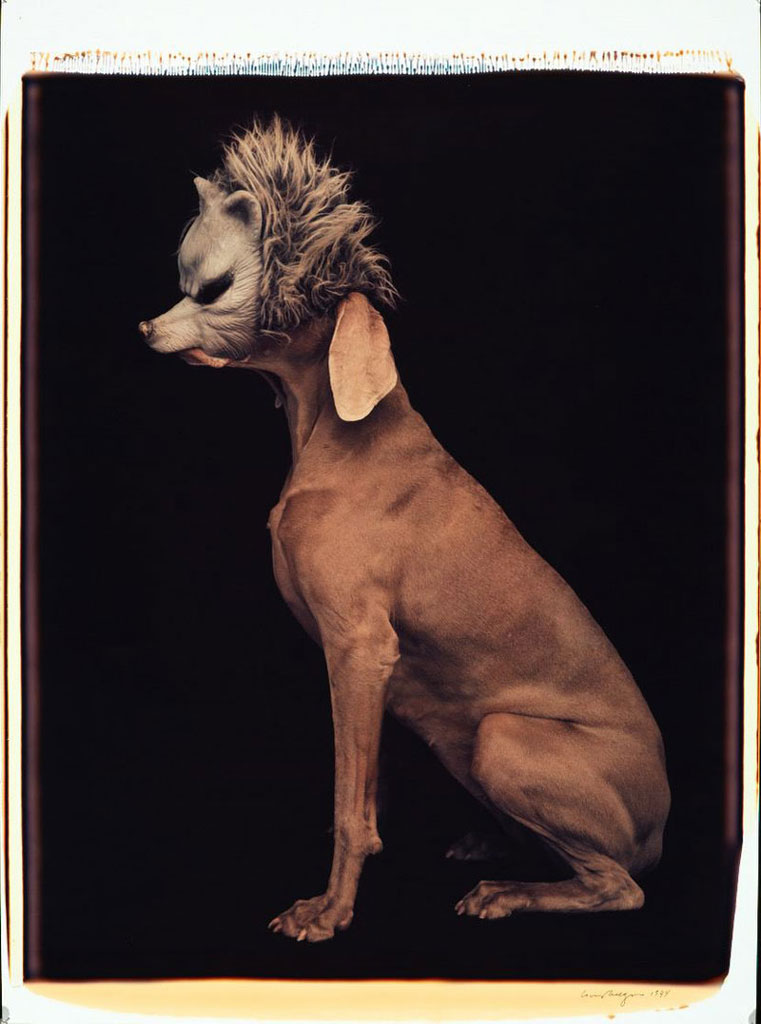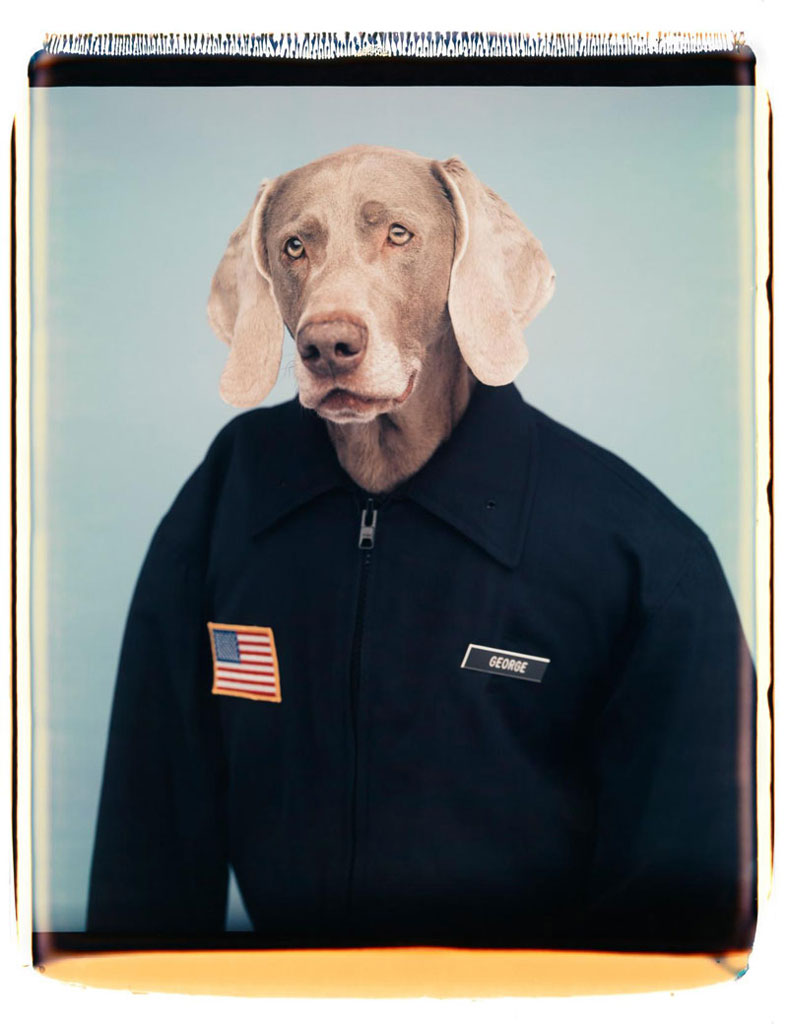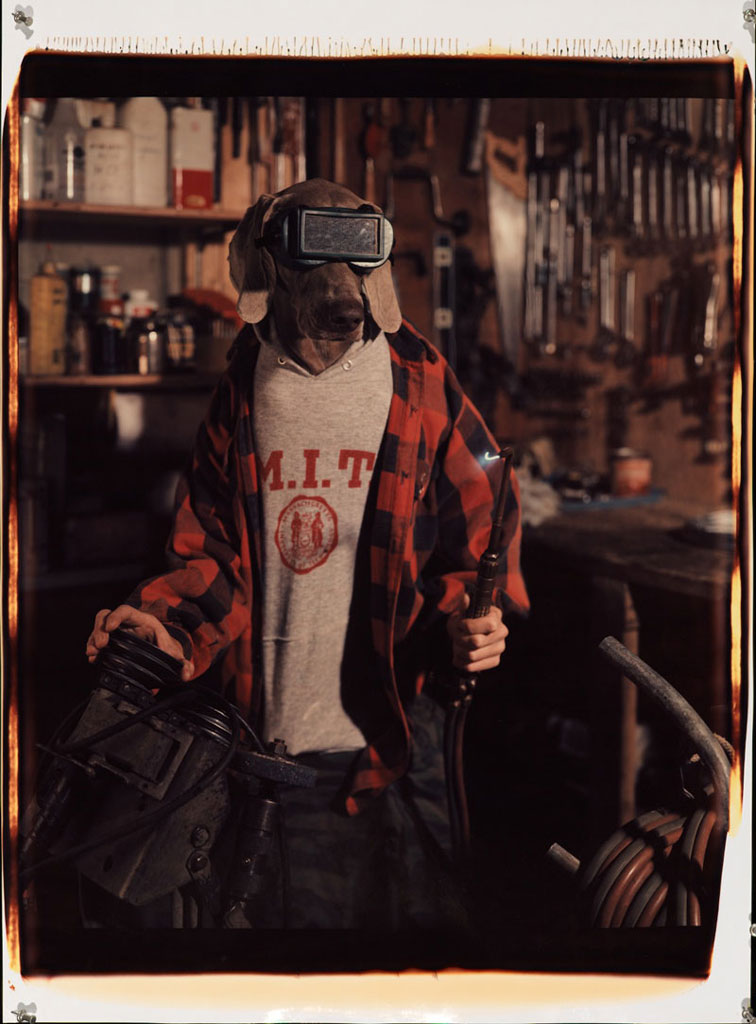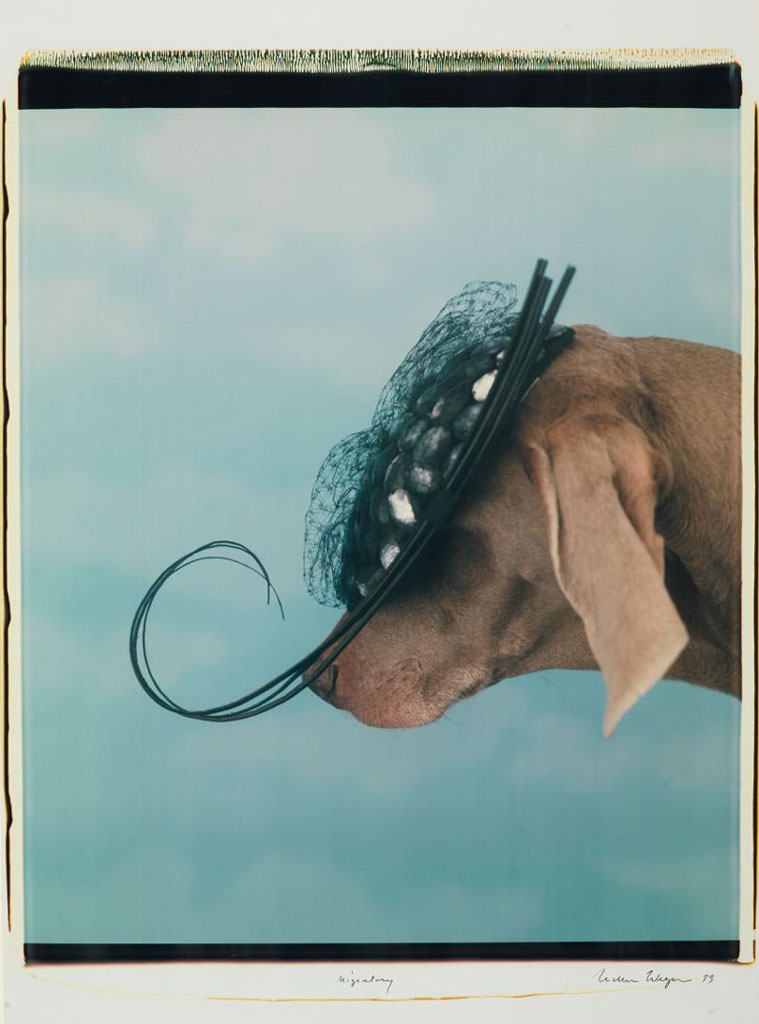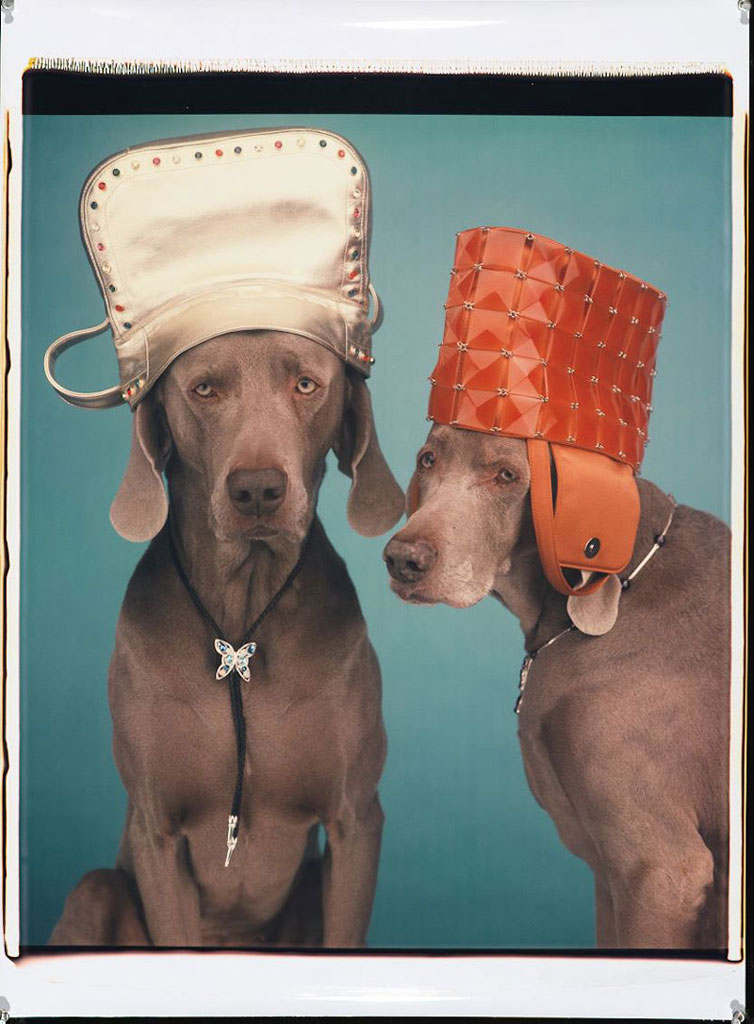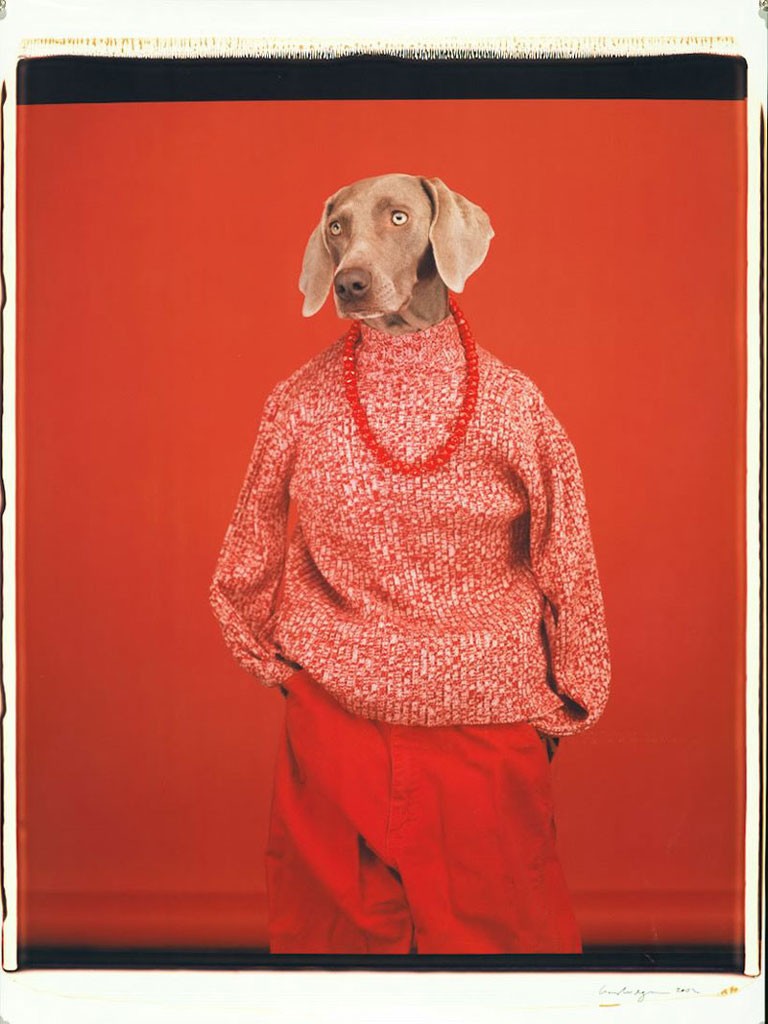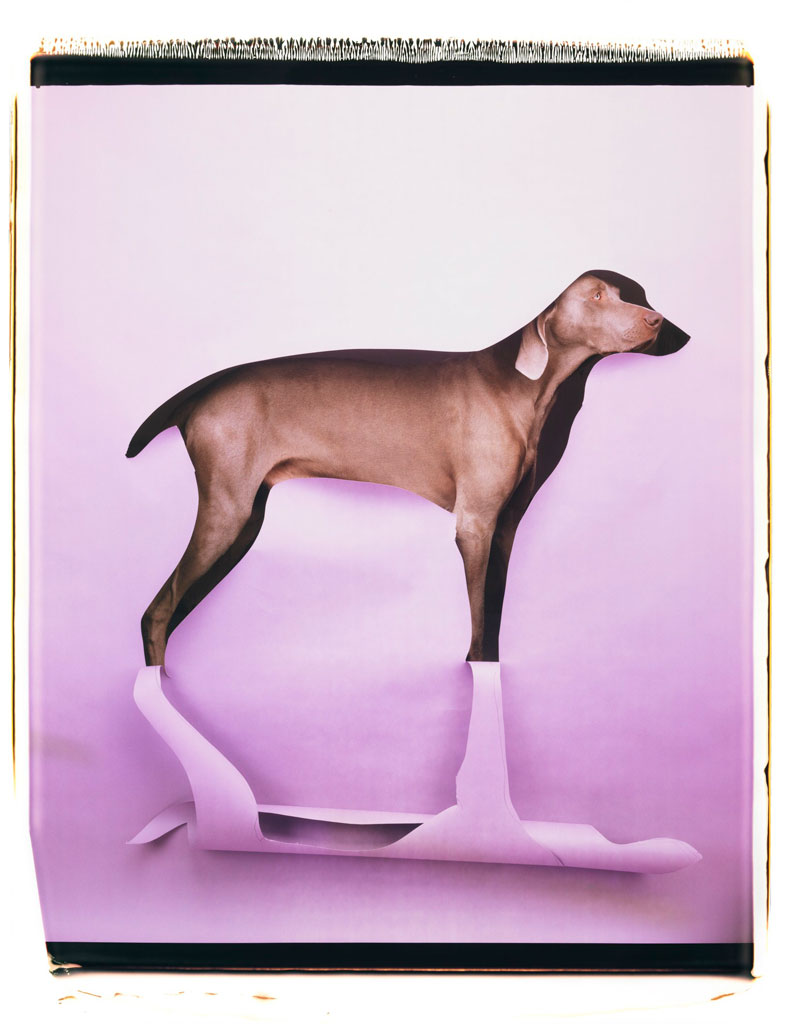PHOTO:William Wegman-Being Human
 A key figure in the West Coast Conceptual Art Movement, William Wegman has been recognized internationally for his videos, photographs, paintings and drawings. A major and long-lasting body of his work has centered on photographs of his Weimaraners: Man Ray, Fay Ray, their descendants and relatives. These patient and willing subjects have made their way into Wegman’s works over the years, yet until now, his rich archive has never been explored in depth.
A key figure in the West Coast Conceptual Art Movement, William Wegman has been recognized internationally for his videos, photographs, paintings and drawings. A major and long-lasting body of his work has centered on photographs of his Weimaraners: Man Ray, Fay Ray, their descendants and relatives. These patient and willing subjects have made their way into Wegman’s works over the years, yet until now, his rich archive has never been explored in depth.
By Efi Michalarou
Photo: MASI Lugano Archive
Dogs have occupied William Wegman’s works ever since he brought his Weimaraner to his studio in 1970. The exhibition “Being Human” at Museo d’arte della Svizzera italiana (MASI Lugano), tracks three decades of relationships between the enigmatic American artist and his four-legged muses. The exhibition features 90 Polaroids along with a dozen pigment prints including a number of multi-panel works divided into chapters, each of which brings together works which address a specific theme, or which are connected by similar visual allusions. Wegman’s earlier exhibitions have toyed with the purposely ambiguous canine/human interface, but have never fully embraced the idea that his work is essentially about the human condition. “Being Human” looks at his oeuvre through this lens. William Wegman was born in Holyoke, Massachusetts in 1943. He received a BFA from the Massachusetts College of Art, Boston and an MFA in painting from the University of Illinois, Urbana-Champagne in 1967. Wegman taught at the University of Wisconsin between 1968 and 1970, and then relocated to teach at California State College, Long Beach. He became an early exponent of conceptual art, and his first works were performance based. Pieces included throwing radios off a roof and floating Styrofoam letters along the Milwaukee River. An installation work was included in Harold Szeemann’s influential exhibition “Live in Your Head: When Attitudes Become Form” in Bern in 1969, alongside works by Joseph Beuys, Richard Serra and Bruce Nauman. Wegman’s first photographs and films were made as a way of documenting these early ephemeral and performance-based works, although they quickly became the focus of his artistic output. Wegman was pioneering in his conceptual use of both video and photography. Whereas his contemporaries relied on large, boldly coloured images combined with text, Wegman produced black and white photographs and moving images that utilised the subtlest of visual puns to convey their message. Man Ray, his first pet Weimaraner, became a central figure in Wegman’s early photographs and video works. Wegman and Man Ray moved to NewYork in 1972 and continued their collaboration for twelve years. In the early 1970s, Wegman’s work began to receive critical acclaim, and was exhibited internationally. Solo shows were held at Sonnabend Gallery in Paris, Situation Gallery in London and Konrad Fisher Gallery in Düsseldorf. A video by Wegman was featured in the Whitney Biennial in 1973, the first year that any video art was included in the curation. Man Ray and Wegman’s on going artistic partnership throughout the 1970s led to features for Sesame Street and Saturday Night Live, and numerous appearances on Late Night with David Letterman and The Tonight Show. When Man Ray died in March 1982, The Village Voice featured him on their cover, and named him ‘Man of the Year’. Wegman returned to photographing dogs in 1987, when his second Weimaraner, Fay Ray, began to feature heavily in his work. His cast of characters was expanded with the birth of Fay’s litter in 1989. Wegman continued to photograph Fay as well as her puppies Battina, Crooky and Chundo, and later, their offspring, Chip, Bobbin, Candy and Penny using a large format 20×24 inch Polaroid camera. Wegman worked extensively with the Polaroid format from 1979 until 2007. In 1995, Wegman’s film “The Hardly Boys” was screened at the Sundance Film Festival. His work has been commissioned by French Vogue and The New York Times as well as for various fashion brands and the Metropolitan Opera.
Info: Curator William A. Ewing Museo d’arte della Svizzera italiana (MASI Lugano), Piazza Bernardino Luini 6, Lugano, Duration: 8/9/19-6/1/20, Days & Hours: Tue-Wed & Fri-Sun 10:00-18:00, Thu 10:00-20:00, www.masilugano.ch
